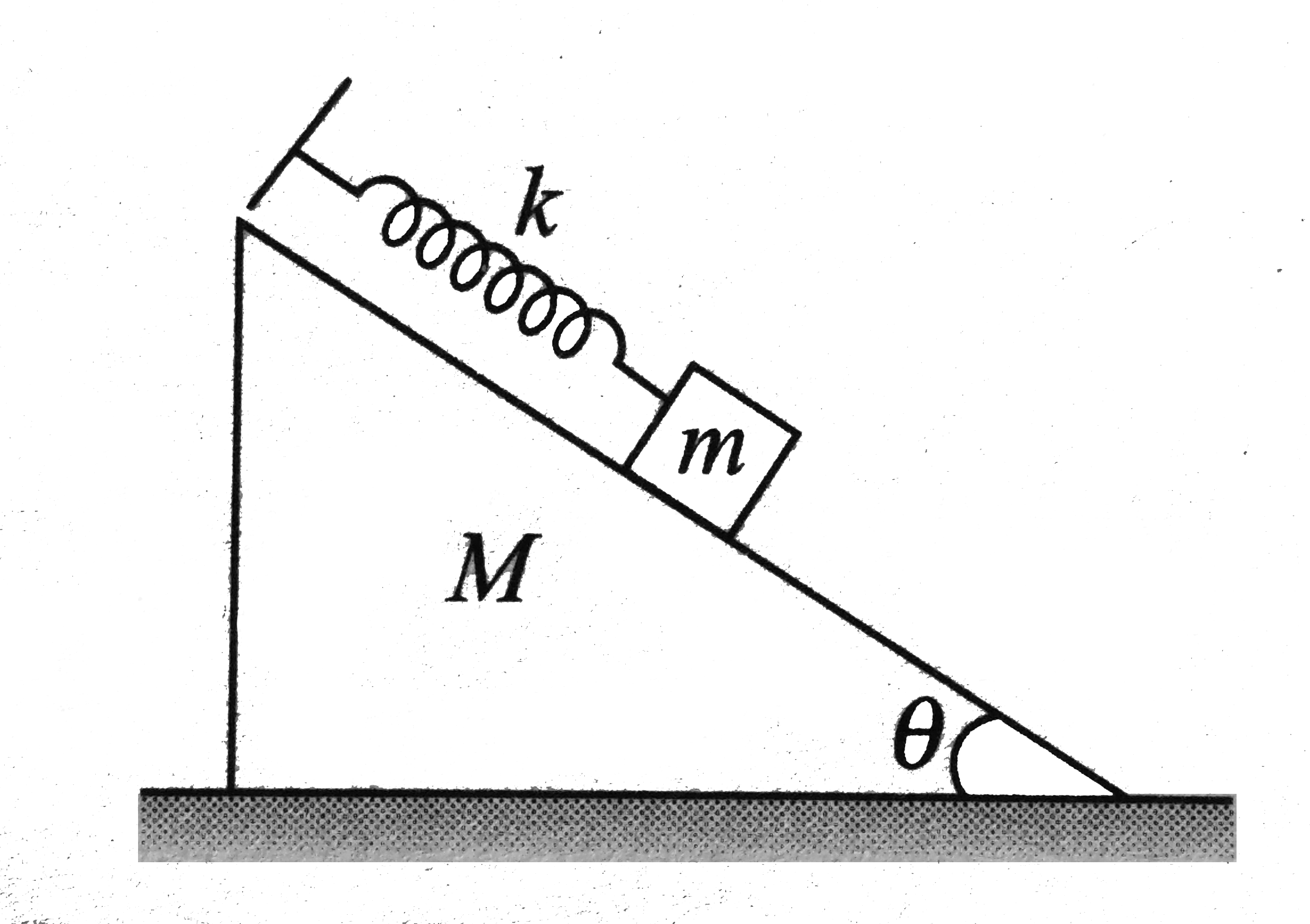A particle is attached to a vertical spring and is pulled down a distance 4cm below its equilibrium and is released from rest. The initial upward acceleration is 0.5ms−2. The angular frequency of oscillation is
3.53rad/s
0.28rad/s
1.25rad/s
0.08rad/s
The correct Answer is:A
To find the angular frequency of oscillation for the particle attached to a vertical spring, we can follow these steps:
Step 1: Understand the given data
- The particle is pulled down a distance x=4cm below its equilibrium position.
- The initial upward acceleration a=0.5m/s2.
Step 2: Convert the distance from centimeters to meters
Since the standard unit for distance in physics is meters, we convert 4cm to meters:
x=4cm=4×10−2m=0.04m
Step 3: Use the formula for angular frequency
The angular frequency ω can be calculated using the formula:
ω=√ax
where:
- a is the acceleration,
- x is the displacement from the equilibrium position.
Step 4: Substitute the values into the formula
Now, substituting the values of a and x:
ω=√0.5m/s20.04m
Step 5: Calculate the value
Calculating the fraction inside the square root:
0.50.04=12.5
Now take the square root:
ω=√12.5≈3.54rad/s
Step 6: Final answer
Thus, the angular frequency of oscillation is approximately:
ω≈3.54rad/s
Summary of the solution
The angular frequency of oscillation for the particle attached to the vertical spring is approximately 3.54rad/s.
---
- The particle is pulled down a distance x=4cm below its equilibrium position.
- The initial upward acceleration a=0.5m/s2.
Since the standard unit for distance in physics is meters, we convert 4cm to meters:
x=4cm=4×10−2m=0.04m
The angular frequency ω can be calculated using the formula:
ω=√ax
where:
- a is the acceleration,
- x is the displacement from the equilibrium position.
Now, substituting the values of a and x:
ω=√0.5m/s20.04m
Calculating the fraction inside the square root:
0.50.04=12.5
Now take the square root:
ω=√12.5≈3.54rad/s
Thus, the angular frequency of oscillation is approximately:
ω≈3.54rad/s
The angular frequency of oscillation for the particle attached to the vertical spring is approximately 3.54rad/s.
Topper's Solved these Questions
- SIMPLE HARMONIC MOTIONBOOK - DC PANDEY ENGLISHCHAPTER - SIMPLE HARMONIC MOTIONEXERCISE - Level 1 Subjective
39 Videos
- SIMPLE HARMONIC MOTIONBOOK - DC PANDEY ENGLISHCHAPTER - SIMPLE HARMONIC MOTIONEXERCISE - Level 2 Single Correct
28 Videos
- SIMPLE HARMONIC MOTIONBOOK - DC PANDEY ENGLISHCHAPTER - SIMPLE HARMONIC MOTIONEXERCISE - Level 1 Assertion And Reason
10 Videos
- SEMICONDUCTORS AND ELECTRONIC DEVICESBOOK - DC PANDEY ENGLISHCHAPTER - SEMICONDUCTORS AND ELECTRONIC DEVICESEXERCISE - More than One Option is Correct
3 Videos
- SOLVD PAPERS 2017 NEET, AIIMS & JIPMERBOOK - DC PANDEY ENGLISHCHAPTER - SOLVD PAPERS 2017 NEET, AIIMS & JIPMEREXERCISE - Solved paper 2018(JIPMER)
38 Videos
Similar Questions
A particle is attached to a vertical spring and is pulled down a distance 0.04m below its equilibrium position and is released from rest. The initial upward acceleration of the particle is 0.30ms−2. The period of the oscillation is
View SolutionA particle executing SHM has a maximum speed of 0.5ms−1 and maximum acceleration of 1.0ms−2. The angular frequency of oscillation is
View SolutionA block of mass m connected with a smooth prismatic wedge of mass M is released from rest when the spring is relaxed. Find the angular frequency of oscillation.

View SolutionA mass of 0.5 kg is hung from a spring. A gradually increasing 0.5 N force is required to pull the mass downward a distance of 0.25 m from its equilibrium position,if the mass is then released from this position, find
(a) The total energy of the system .
(b) The frequency of the oscillation
(c ) The speed and acceleration of the mass as it passes the equilibrium position.
(d) The speed and acceleration of the mass when the diplacement from equilibrium is 0.25 m
(e) For the initial condition stated, write down the diplacement equation of motion for this mass.
View SolutionA particle is moving along a circle and its linear velocity is 0.5ms when its angular velocity is 2.5rads−1. Its tangential acceleration is 0.2ms−2 then its angular acceleration is
View SolutionInitially a body is at rest. If its acceleration is 5ms−2 then the distance travelled in the 18th second is :-
View SolutionA block of mass m=0.1kg is connected to a spring of unknown spring constant k. It is compressed to a distance x from its equilibrium position and released from rest. After approaching half the distance (x2) from the equilibrium position, it hits another block and comes to rest momentarily, while the other block moves with velocity 3ms−1. The total initial energy of the spring is :
View SolutionA mass m attached to a spring of spring constant k is stretched a distance x0 from its equilibrium position and released with no initial velocity. The maximum speed attained by mass in its subsequent motion and the time at which this speed would be attained are, respectively.
View SolutionA mass m attached to a spring of spring constant k is stretched a distance x0 from its equilibrium position and released with no initial velocity. The maximum speed attained by mass in its subsequent motion and the time at which this speed would be attained are, respectively.
View SolutionA particle of mass m is rigidly attached at A to a ring of mass 3m and radius r. The system is released from rest and rolls without sliding. The angular acceleration of ring just after release is

View Solution
